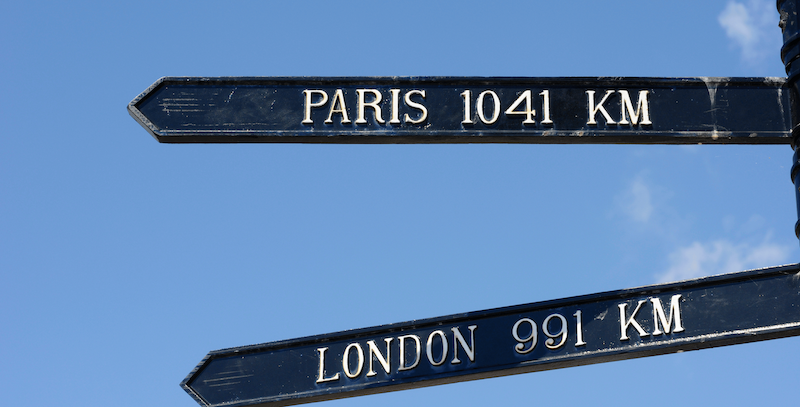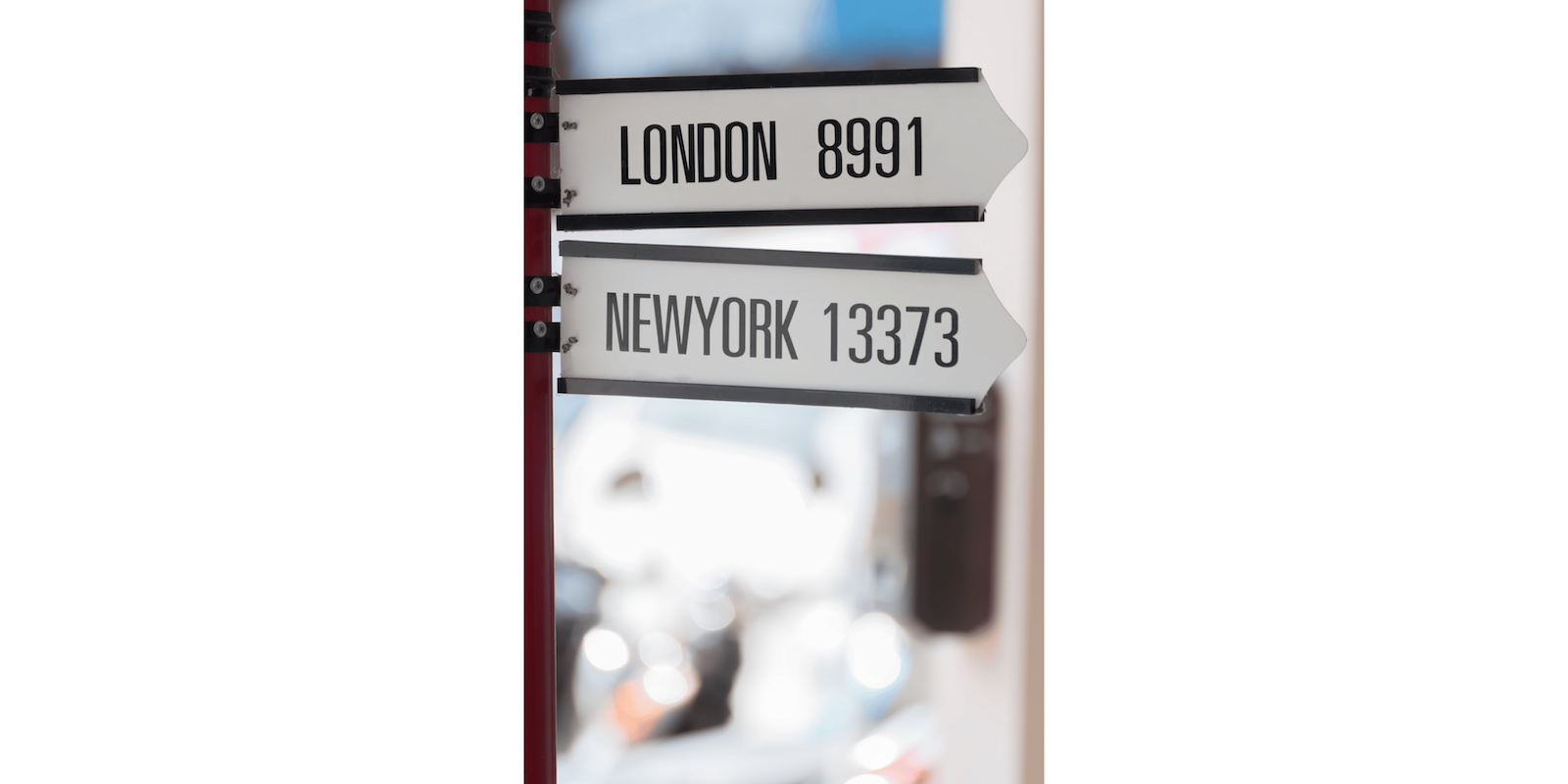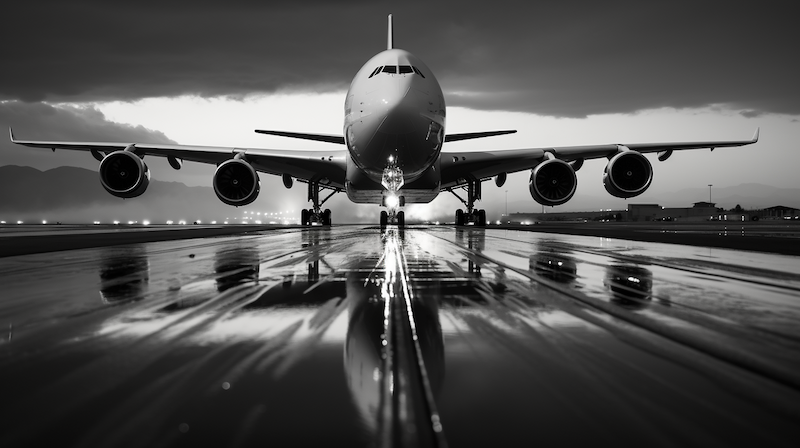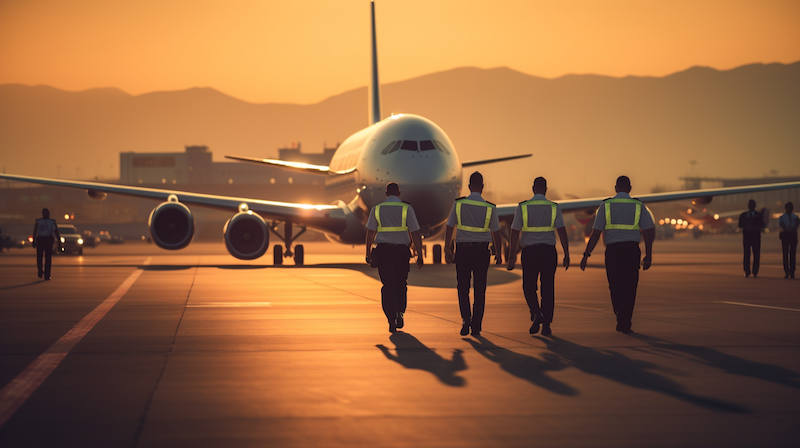As an aviation enthusiast, you might have wondered how many pilots are needed to fly a commercial aircraft safely and efficiently.
The most basic requirement for any large commercial flight (short-haul or long-haul) is to have a minimum of two pilots, regardless of the nature of the flight. That comprises a commander of the aircraft (captain) and a co-pilot (also known as the first officer).
The captain is ultimately responsible for the safety and operation of the aircraft, while the first officer assists and supports the captain in various tasks such as navigation, communication, monitoring and backup. Both pilots are qualified and trained to fly the aircraft, and they usually alternate between flying and resting during the flight.
That being said there are various factors that could demand the number of pilots required for a flight, such as the type, size and capacity of the aircraft, the duration and distance of the flight, and the regulations and standards of the aviation industry.
In this blog post, I will try to explain some of these factors and give you an overview of how many pilots are required for different kinds of aircraft and flights.
Does a flight always have two pilots?

Not all flights will need two pilots, some might need more than two pilots and some can do just fine with just one pilot.
Some small or very light jets (VLJs) such as the Cirrus Vision Jet or the Eclipse 500 can be flown by a single pilot, provided that they meet certain criteria such as having a maximum takeoff weight of less than 12,500 pounds, having no more than six seats, and having advanced avionics systems that reduce the workload of the pilot.
These aircraft are typically used for personal or business travel, rather than for commercial or passenger transport.
Another exception is when there is a need for more than two pilots for the flight plan. This is usually the case for long-haul flights that exceed a certain duration or distance, such as transatlantic or transpacific flights. In these cases, additional pilots (also called relief or augmenting pilots) are required to join the crew, so that they can take turns to rest and sleep during the flight.
The number of additional pilots depends on the length of the flight and the regulations of the country or region where the flight operates. For example, in Canada, a flight that lasts more than nine hours requires at least three pilots, while a flight that lasts more than 13 hours requires at least four pilots. In Europe, a flight that lasts more than 11 hours requires at least three pilots.
How many pilots required for a short-haul flight?

A short-haul flight is generally defined as a flight that lasts less than six hours and covers a distance of less than 3,000 nautical miles. For example, a flight from New York to Toronto or from London to Paris would be considered a short-haul flight.
As a rule of thumb, short-haul flights, with a duration of less than 6 hours require only two pilots, one captain, and one first officer, as they can complete the flight without exceeding their duty time limits or fatigue levels. However, depending on the schedule and frequency of the flights, more pilots may be needed to cover multiple flights per day or per week.
For instance, if an airline operates four flights per day between New York and Toronto with one aircraft, it would need at least four pilots (two captains and two first officers) to fly those flights.
How many pilots required for a long-haul flight?

A long-haul flight is generally defined as a flight that lasts more than six hours and covers a distance of more than 3,000 nautical miles. For example, a flight from New York to London or from Los Angeles to Tokyo would be considered a long-haul flight.
Long haul flights generally have more than 2 pilots, at least one captain and at least one first officer and one or more relief pilots, so that when the relief pilots take over, the primary pilots can rest during the flight to maintain their alertness and performance during the remainder of the flight.
As mentioned earlier, the number of additional pilots depends on the length of the flight and the regulations of the country or region where the flight operates. For example, if an airline operates one flight per day between New York and London with one aircraft, it would need at least three pilots (one captain and two first officers) to fly that flight.
Does the number of pilots depend on the capacity of the flight?

The capacity or size of the aircraft can also influence the number of pilots required. Generally speaking, larger aircraft require more pilots than smaller aircraft, because they have more complex systems and procedures that need to be monitored and managed by the crew.
For example, an Airbus A380 can carry up to 853 passengers in a single-class configuration, while a Boeing 737 can carry up to 230 passengers in a single-class configuration. Therefore, an Airbus A380 would require more pilots than a Boeing 737.
However, there is no fixed rule or formula that determines how many pilots are required based on the capacity of the aircraft. Rather, it depends on the design and certification of the aircraft, as well as the operational requirements and preferences of the airline.
For example, some aircraft such as the Boeing 747 or the Lockheed L-1011 have a third crew member in the cockpit, called the flight engineer, who is responsible for monitoring and controlling the engines, fuel, electrical and hydraulic systems of the aircraft5.
However, newer aircraft such as the Boeing 777 or the Airbus A350 have eliminated the need for a flight engineer, as they have more advanced and automated systems that can be operated by the two pilots.
Therefore, to give you an idea of how many pilots are required based on the capacity of the flight, I will use three classes of flight capacity: small (less than 100 passengers), medium (between 100 and 300 passengers), and large (more than 300 passengers). These are not official or standard categories, but rather approximate and illustrative ones.
Based on these classes, here are some examples of how many pilots are required for different kinds of aircraft:
- Small: For small aircraft such as the Cessna Citation X or the Embraer Phenom 300, only one or two pilots are required per aircraft, depending on the certification and configuration of the aircraft. These aircraft are usually used for personal or business travel, rather than for commercial or passenger transport.
- Medium: For medium aircraft such as the Boeing 737 or the Airbus A320, two pilots are required per aircraft, regardless of the configuration or destination of the flight. These aircraft are widely used for short-haul and medium-haul flights, as well as for low-cost and regional airlines.
- Large: For large aircraft such as the Boeing 777 or the Airbus A380, two to four pilots are required per aircraft, depending on the length and destination of the flight. These aircraft are mainly used for long-haul and intercontinental flights, as well as for major and premium airlines.
How the number of pilots in the cockpit has changed over the last 100 years?
The number of pilots in the cockpit has changed significantly over time, as a result of technological advancements and regulatory changes in the aviation industry. In the early days of aviation, most aircraft were flown by a single pilot, who had to perform all the tasks related to flying and navigating the aircraft.
However, as aircraft became larger, faster and more complex, more crew members were added to assist and support the pilot.
For example, in the 1930s and 1940s, most commercial aircraft had three crew members in the cockpit: a pilot, a co-pilot and a navigator. The navigator was responsible for determining and maintaining the position and direction of the aircraft using maps, charts and instruments.
In the 1950s and 1960s, another crew member was added to the cockpit: the flight engineer. The flight engineer was responsible for monitoring and controlling the engines, fuel, electrical and hydraulic systems of the aircraft.
This was necessary because these systems became more sophisticated and demanding with the introduction of jet engines and pressurized cabins. Therefore, most commercial aircraft had four crew members in the cockpit: a pilot, a co-pilot, a navigator and a flight engineer.
In the 1970s and 1980s, however, some changes occurred that reduced the number of crew members in the cockpit.
First, navigation systems became more accurate and reliable with the development of inertial navigation systems (INS) and global positioning systems (GPS). These systems allowed pilots to determine their position and direction without relying on external references or inputs. Therefore, navigators became obsolete and were phased out from most commercial aircraft.
Second, flight engineers became less essential with the introduction of glass cockpits and electronic flight instrument systems (EFIS). These systems replaced conventional gauges and dials with digital displays and computers that could monitor and control various systems automatically or with minimal input from pilots. Therefore, flight engineers were also eliminated from most commercial aircraft.
As a result, by the end of the 1980s, most commercial aircraft had only two crew members in the cockpit: a pilot and a co-pilot. This is still the case today for most short-haul and medium-haul flights.
However, it needs to be mentioned again that for long-haul flights that exceed a certain duration or distance, additional pilots are still required to join the crew so that they can rest during the flight.
I hope this blog post has given you some insight into how many pilots are required for an aircraft and why. If you are interested in learning more about aviation or becoming a pilot yourself, I encourage you to explore the various resources and opportunities available online and offline.
If you are an aspiring pilot or would like to know as an aviation enthusiast, how many jobs are created when a flight is purchased by an Airline, read here . Aviation is a fascinating and rewarding field that offers many challenges and benefits for those who pursue it. Thank you for reading and happy flying!
Some other questions on number of pilots in flights
How many pilots are required on short haul flights?
For short haul flights up to 8 hours or sometimes 9 hours two pilots, one captain and one first officer are sufficient to fly the plane. However, depending on the airline’s regulations and the type of plane, there may be additional pilots onboard for other purposes such as line checks or supervision/instruction/evaluation.
How many pilots are required on long haul flights?
For long-haul flights above 8hours 3 pilots are required. Out of the three pilots at least one Captain and one first officer are required to be on board and one relief pilot will be available.
How many pilos are required on 16hours long haul flight?
On ultra long-haul flights lasting more or equal to 16 hours of flight duration, two crews of pilots, that is 4 pilots are required to be on board. A crew in the cockpit consists of one captain and one first officer. So on these ultra long haul flights, a primary crew will take care of take off and landing, while the relief crew as the name suggests allows for the rest of the primary crew during the cruise.

